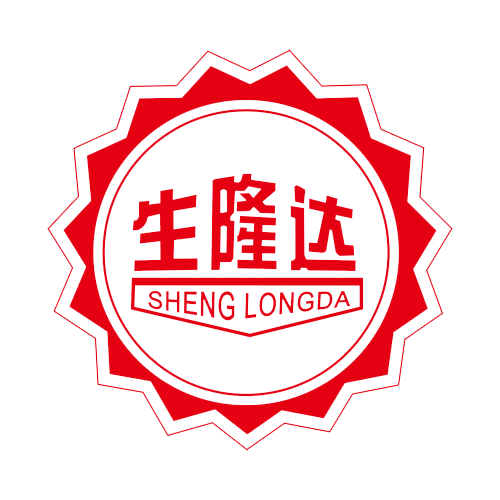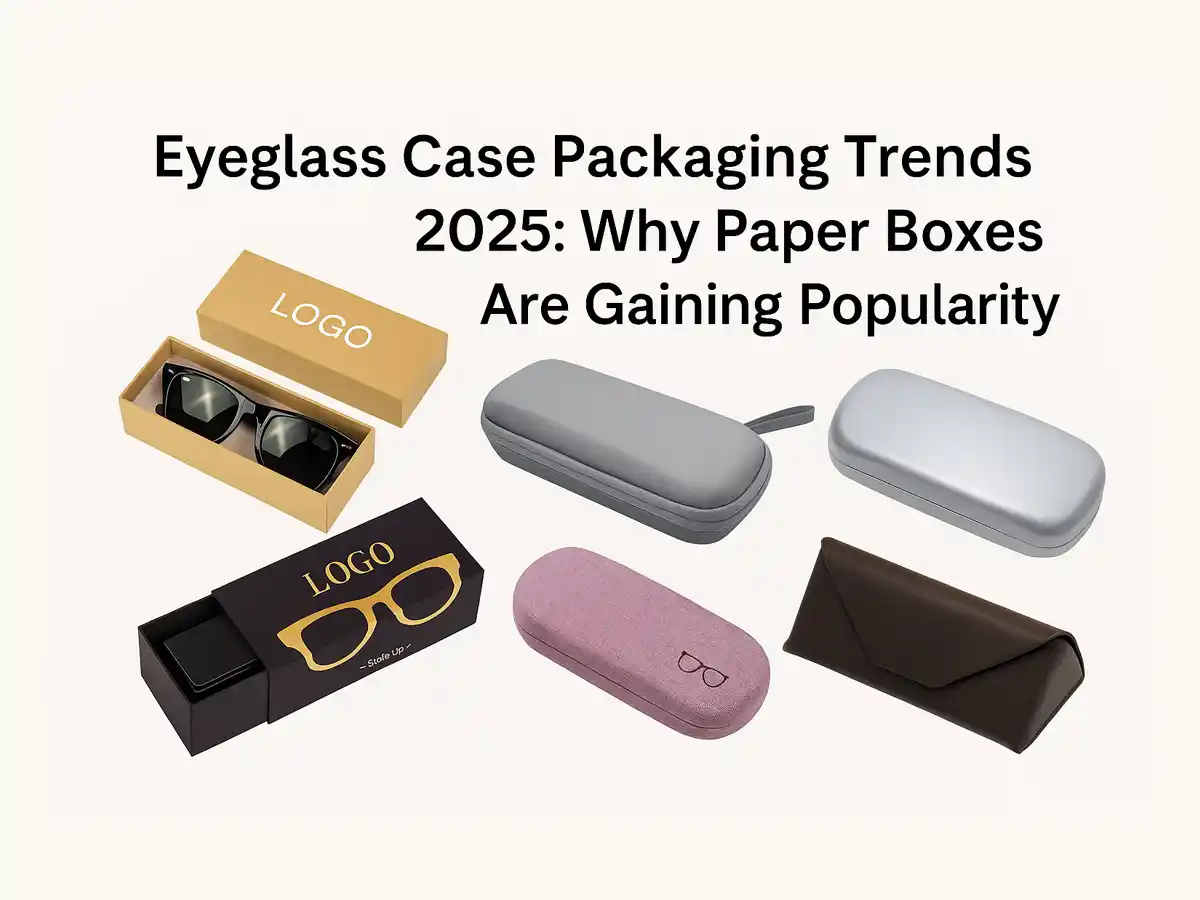I. Introduction: The Changing Landscape of Eyeglass Packaging
Eyeglass packaging has evolved far beyond simple protection. In 2025, the market reflects a growing intersection between functionality, design, and sustainability. As consumers become more environmentally aware and brands compete for a distinctive unboxing experience, packaging now represents both protection and presentation.
Traditionally, eyeglass packaging focused on durability — using materials like plastic, metal, or PU leather to prevent damage. However, this approach is shifting. The global eyewear industry is now emphasizing sustainable and recyclable solutions, especially as e-commerce sales of eyewear continue to grow. According to industry data, sustainable materials — particularly paper-based packaging — are increasing their market share at a faster pace than synthetic options.
This evolution reflects not only environmental responsibility but also changing consumer expectations: packaging must now be visually appealing, eco-friendly, and efficient to produce and ship.
II. Current Main Types of Eyeglass Packaging on the Market
The eyeglass packaging market offers several material options, each suited to different brand positions, cost targets, and user experiences. Below is a breakdown of the five most common types currently used in the industry.
1. EVA (Ethylene Vinyl Acetate) Packaging Boxes
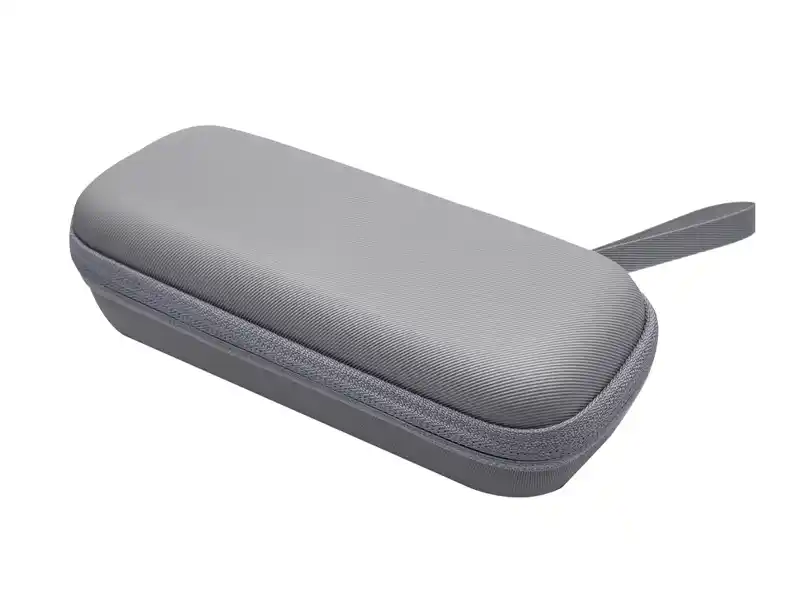
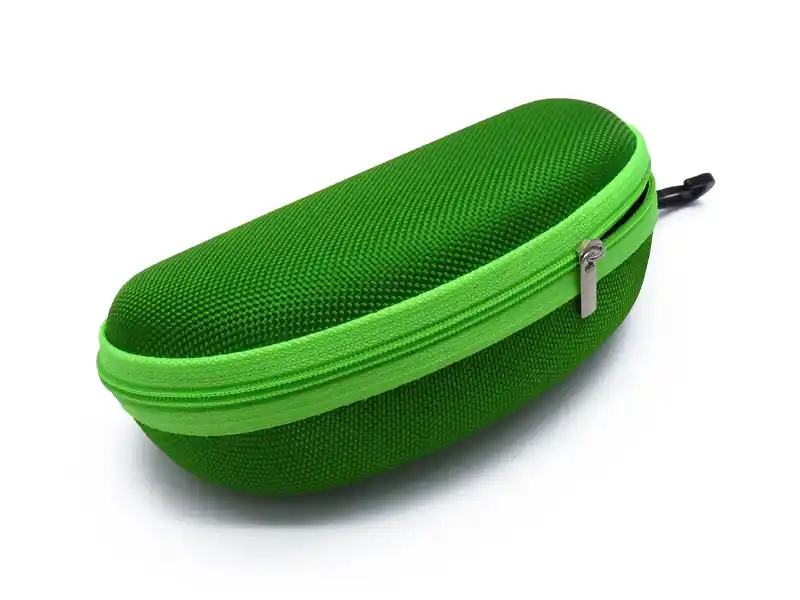
EVA cases are popular for their rigid protection and lightweight structure. They provide effective shock resistance, making them ideal for sports eyewear or travel-friendly products.
- Advantages: Durable, water-resistant, and highly protective.
- Limitations: Less sustainable due to its synthetic composition; customization options are limited.
2. PU Leather Packaging Boxes
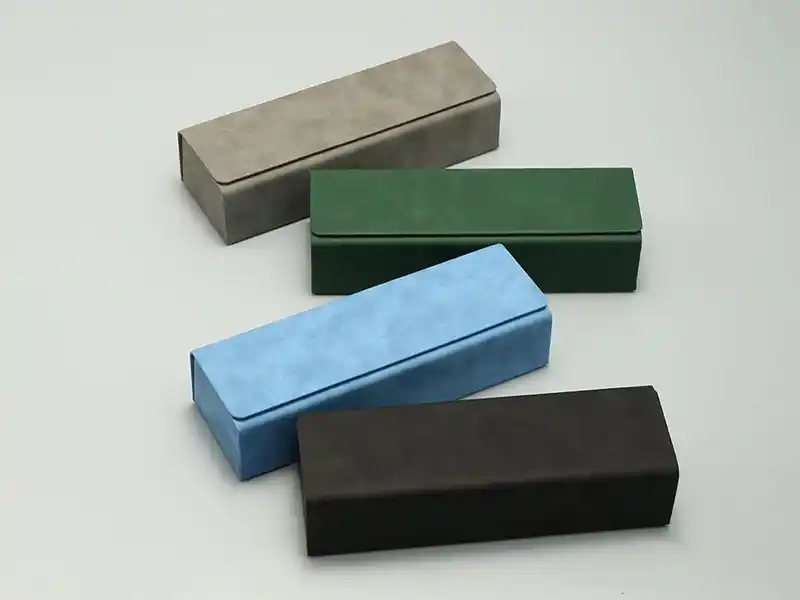
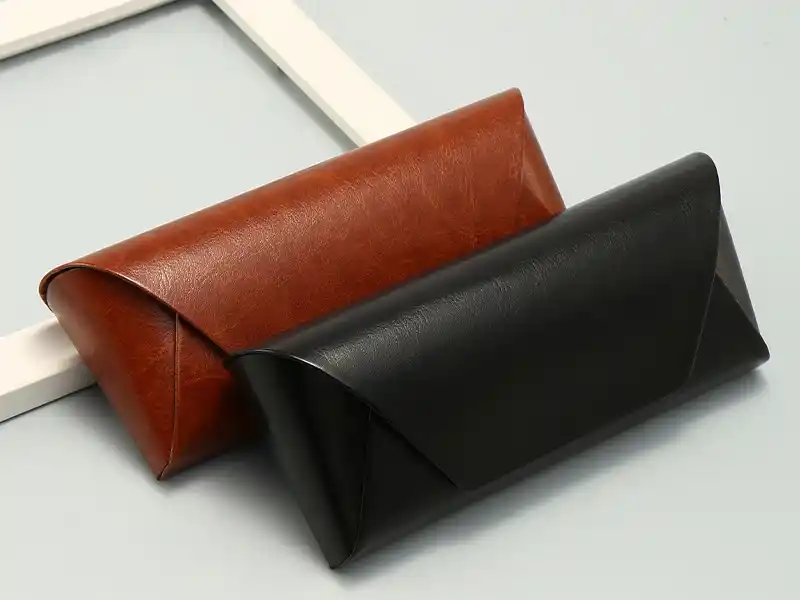
PU leather, a synthetic alternative to genuine leather, offers a premium look and smooth finish. It’s a common choice for fashion or designer eyeglasses.
- Advantages: Elegant texture, available in various finishes, suitable for embossing or logo stamping.
- Limitations: Not biodegradable and more expensive to produce than paper or EVA boxes.
3. Metal Eyeglass Cases

Metal cases (usually aluminum or tinplate) are known for their strength and longevity. They are often used for luxury or industrial eyewear where maximum protection is essential.
- Advantages: Recyclable, extremely durable, and resistant to deformation.
- Limitations: Heavier and costlier; limited flexibility in shape and print design.
4. Paper Eyeglass Boxes
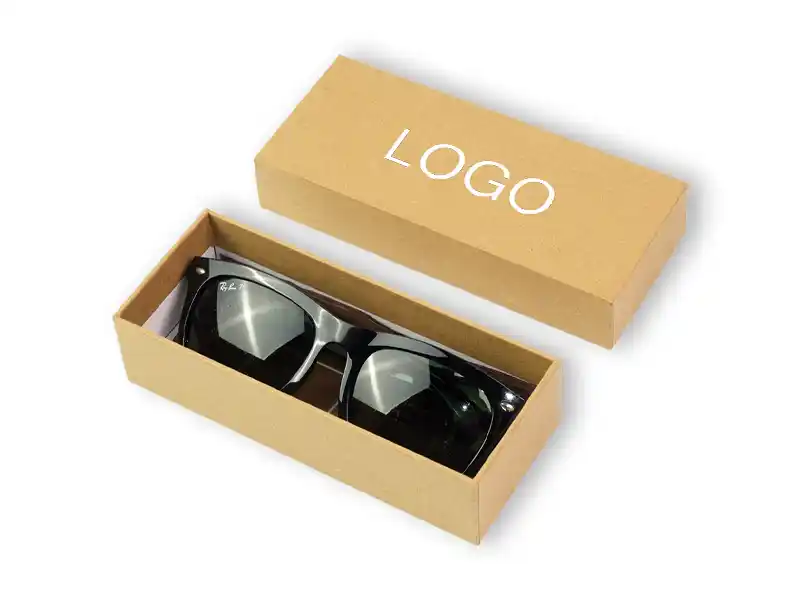
Paper and paperboard boxes have become the fastest-growing segment in the eyewear packaging market. With advancements in coating and printing technology, paper boxes now balance sustainability, aesthetics, and practicality.
- Advantages: Recyclable, lightweight, customizable, and suitable for various box structures (drawer, magnetic, mailer, lid-style).
- Limitations: Less water-resistant and requires additional coatings for durability.
5. Cloth + Metal Combination Packaging
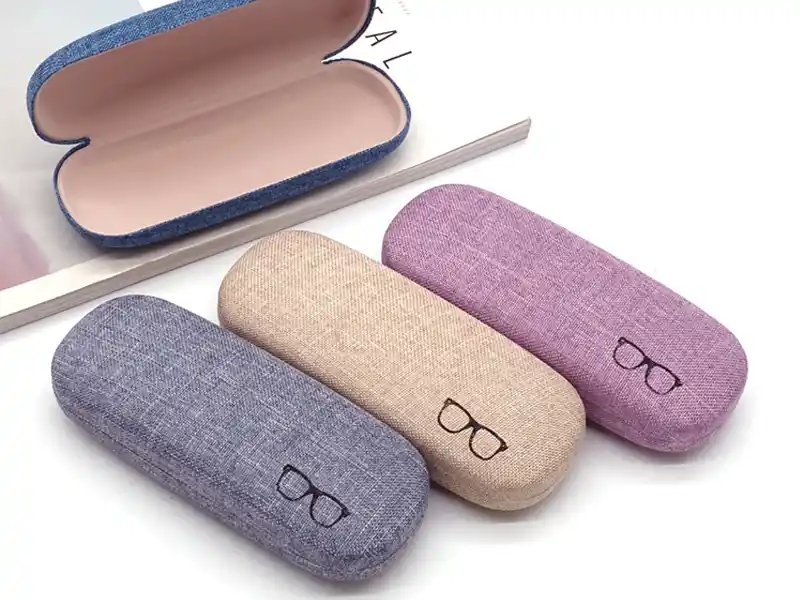
This hybrid type blends a soft fabric exterior with a metal inner frame, offering both texture and structural integrity. It’s used primarily for mid- to high-end eyewear collections.
- Advantages: Unique tactile experience, durable protection, and stylish presentation.
- Limitations: Complex production process and poor recyclability due to mixed materials.
Table 1. Comparison of Main Eyeglass Packaging Materials
| Packaging Type | Material Description | Main Advantages | Key Limitations | Common Applications |
|---|---|---|---|---|
| EVA Box | Molded EVA foam with zipper or shell | Strong impact resistance, lightweight | Non-recyclable | Sports eyewear, travel sets |
| PU Leather Box | Synthetic leather over a hard shell | Luxurious look, customizable finish | Non-biodegradable, higher cost | Designer and fashion eyewear |
| Metal Box | Aluminum or tinplate casing | Maximum durability, recyclable | Heavy, limited design flexibility | Luxury or industrial eyewear |
| Paper Box | Paperboard or rigid paper structure | Eco-friendly, customizable, cost-effective | Requires coating for water resistance | Retail and e-commerce eyewear |
| Cloth + Metal Hybrid | Fabric exterior with metal interior | Soft touch, elegant presentation | Difficult to recycle, complex process | Premium eyewear packaging |
III. The Growing Demand for Paper Packaging
Paper packaging is experiencing accelerated growth across the eyewear industry. It now occupies the second-largest share of the eyeglass packaging market, following plastic. This rise is fueled by global sustainability initiatives, evolving consumer habits, and advances in paper processing technology.
Several factors contribute to this shift:
- Sustainability and Recycling:
Paper packaging supports circular economy goals. It is recyclable, biodegradable, and often made from responsibly sourced or FSC-certified paper. - Brand Image and Customization:
High-quality printing, embossing, and lamination enable brands to reflect their visual identity through minimalist or luxury designs — without compromising sustainability. - Logistics and Cost Efficiency:
Paper boxes are lightweight, space-efficient, and ideal for flat shipping or foldable designs — a significant advantage for online eyewear retailers. - Integration with Other Materials:
Many brands now pair paper boxes with microfiber pouches or small cloth bags for added lens protection, combining practicality with an eco-conscious appeal.
In 2025, as consumers place higher value on sustainable packaging, paper-based materials are expected to continue expanding their market presence. This trend not only reshapes product presentation but also guides future innovation in design, coating technology, and material recycling.
IV. Main Types of Eyeglass Paper Boxes
As sustainability continues to drive packaging innovation, paper boxes have become the most adaptable and design-rich form of eyeglass packaging. They balance environmental responsibility with brand presentation, offering diverse structures that can fit everything from affordable daily eyewear to luxury fashion collections.
Below are the five most common types of eyeglass paper boxes used in 2025, each chosen for different market needs.
1. Drawer Boxes (Sliding Boxes)
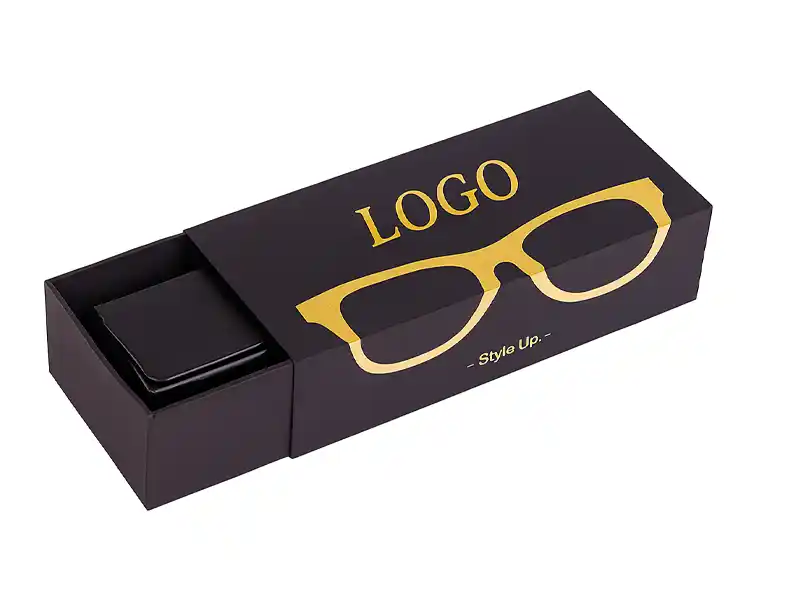
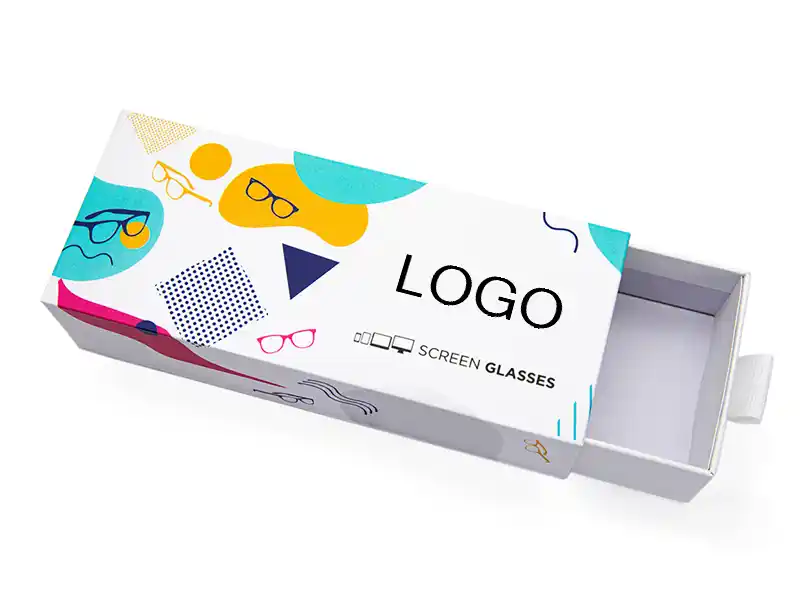
Visual cue: A rectangular box with a pull-out inner tray, like a drawer sliding from its sleeve.
Drawer boxes are widely used for premium eyewear and gift packaging. Their smooth sliding mechanism creates a satisfying unboxing experience while protecting the glasses inside.
- Structure: An outer sleeve and an inner tray with a pull ribbon or thumb notch.
- Advantages: Elegant presentation; easy to assemble; excellent for retail displays.
- Common use: Mid- to high-end eyewear brands emphasizing luxury feel and brand story.
2. Magnetic Closure Boxes
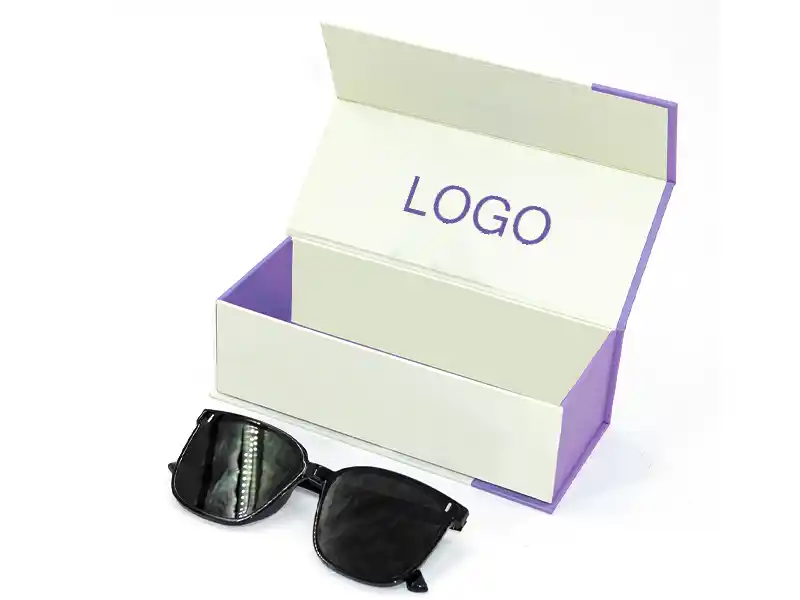
Visual cue: A rigid rectangular box that opens like a book, snapping shut with hidden magnets.
Magnetic boxes are known for their clean design and sturdy structure. The hidden magnets ensure that the box closes securely, giving it a high-end feel.
- Structure: Foldable or rigid box with built-in magnetic flaps.
- Advantages: Reusable, strong protection, and premium tactile experience.
- Common use: Luxury glasses, limited-edition releases, and retail showcase sets.
3. Magnetic Boxes with Windows
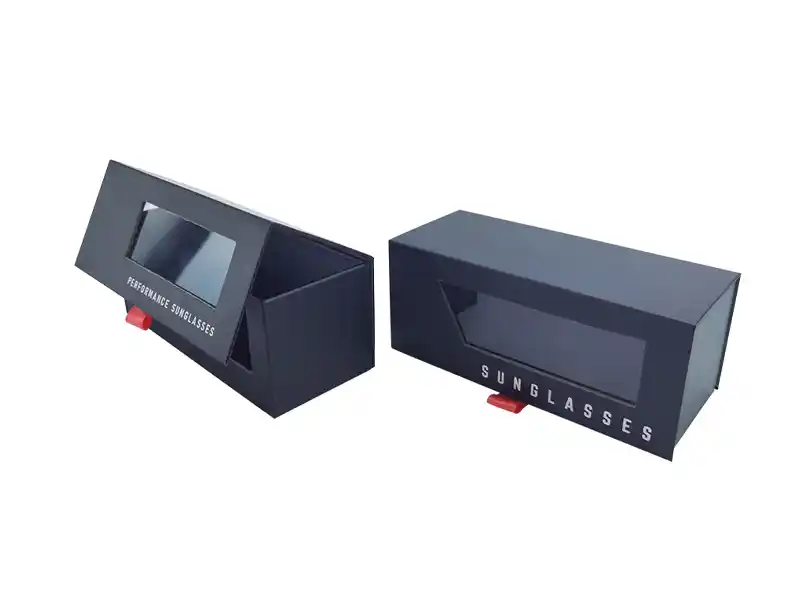
Visual cue: A magnetic lid box with a transparent PET window showing the eyeglass frame inside.
These boxes combine the security of magnetic closures with the visibility of retail packaging. The transparent window allows consumers to preview the product without opening the box.
- Structure: Rigid paperboard with integrated clear window panel.
- Advantages: Strong shelf appeal, perfect for retail display.
- Common use: Retail brands aiming to balance luxury presentation with practicality.
4. Mailing Boxes (Corrugated Boxes)
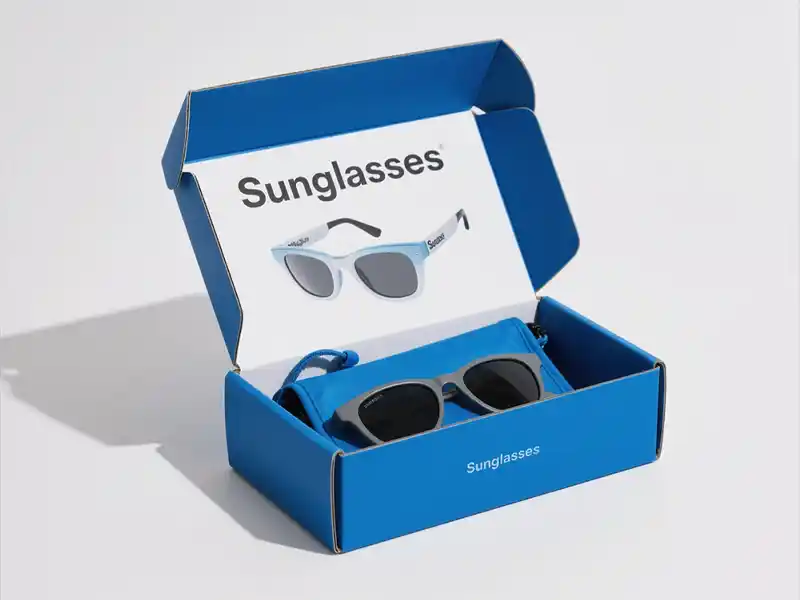
Visual cue: Flat-packed paper boxes that fold into sturdy shipping containers, often branded with printed logos.
Mailing boxes are designed for online eyewear sales and direct-to-consumer deliveries. Made from corrugated or kraft paper, they ensure protection during transit while staying eco-friendly.
- Structure: Foldable corrugated paperboard with locking flaps or adhesive closure.
- Advantages: Cost-efficient, lightweight, customizable, and recyclable.
- Common use: E-commerce eyewear brands and subscription eyewear services.
5. Lid-and-Base Boxes (Two-Piece Rigid Boxes)

Visual cue: A classic rigid box with a removable top cover revealing the glasses inside.
This timeless structure offers simplicity and versatility. It’s one of the most widely used formats in both mid-range and premium eyewear packaging.
- Structure: Two rigid paperboard pieces — a bottom base and a top lid.
- Advantages: Easy to produce, stackable, and suitable for mass production.
- Common use: Retail packaging for standard eyewear collections.
Table 2. Summary of Main Eyeglass Paper Box Types
| Paper Box Type | Structure Description | Main Advantages | Typical Applications |
|---|---|---|---|
| Drawer Box | Sliding tray with outer sleeve | Premium feel, smooth unboxing, elegant design | Gift packaging, designer eyewear |
| Magnetic Closure Box | Foldable or rigid box with magnetic lid | Secure closure, high-end image, reusable | Luxury eyewear sets |
| Magnetic Box with Window | Rigid box with transparent PET window | Product visibility, strong shelf appeal | Retail display packaging |
| Mailing Box | Corrugated or kraft foldable box | Protective, lightweight, recyclable | Online orders, shipping use |
| Lid-and-Base Box | Two-piece rigid structure (lid + base) | Simple, efficient, widely adaptable | Mass-market or classic collections |
Integration with Protective Accessories
Many eyewear brands complement paper boxes with small cloth wraps or microfiber pouches. This combination offers additional lens protection while reinforcing a sustainable, minimalist image. The pouch can also double as a cleaning cloth, reducing extra packaging waste.
Summary Insight
Paper eyeglass boxes are no longer limited to budget packaging. Modern printing, lamination, and structural innovations have transformed them into versatile, brand-defining tools. Whether sliding, magnetic, or corrugated, each format serves a distinct balance of aesthetics, functionality, and environmental responsibility — a direction that continues to shape the packaging trends of 2025.
V. Design and Branding Trends in 2025
Eyeglass packaging design in 2025 is moving toward minimalism, sustainability, and sensory experience. Brands are simplifying structures, using neutral colors, and choosing natural paper textures to project a clean, eco-conscious image.
Sustainable coatings like water-based varnishes and soy inks are replacing plastic laminations, making boxes easier to recycle. At the same time, tactile finishes—such as embossing, soft-touch surfaces, and foil stamping—add a refined feel to the unboxing experience.
Functionality is also evolving: foldable magnetic boxes and modular inserts reduce material waste while improving logistics efficiency. Many brands now incorporate QR codes, recycled papers, and small messages that tell their sustainability story, turning packaging into a communication tool rather than just protection.
VI. Future Outlook: Sustainability Driving Innovation
The future of eyeglass packaging will be defined by innovation in eco-materials and design efficiency. Paperboard continues to advance in strength and print quality, supported by new biodegradable coatings and plant-based adhesives.
Reusable and multi-purpose designs are gaining traction—packaging that doubles as storage boxes or can be easily flattened for recycling. Technology is also being integrated, with QR-coded recycling instructions and traceable supply chains promoting transparency.
Overall, collaboration between material suppliers, designers, and brands is reshaping how eyewear packaging balances durability, beauty, and sustainability.
VII. Conclusion
Eyeglass packaging in 2025 highlights a decisive move from traditional materials like plastic and metal toward recyclable paper-based solutions. Paper boxes—drawer, magnetic, mailing, or lid-style—are now central to both brand presentation and environmental strategy.
They offer the flexibility, cost efficiency, and visual impact that modern consumers value, while aligning with the global shift toward low-carbon production. As the industry continues to innovate, the next phase of eyewear packaging will emphasize not just protection but purpose—designing responsibly for both people and the planet.
